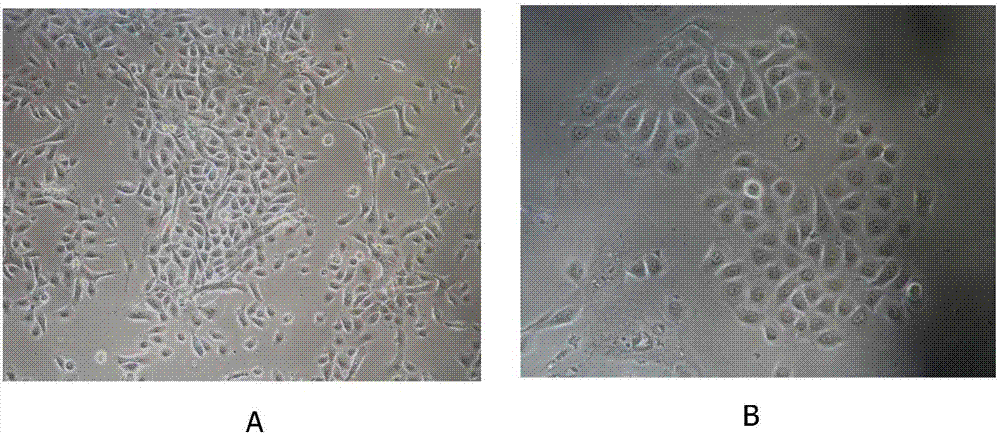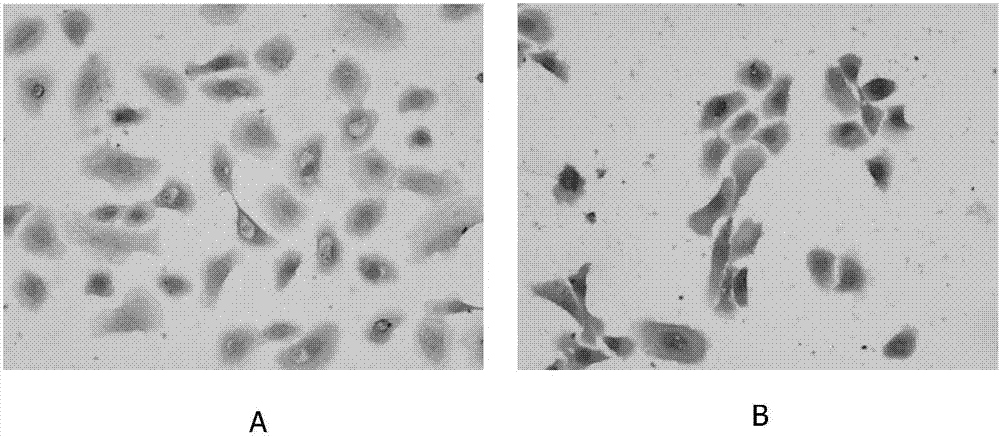Method for building tissue engineered skin by composite DED (de-epidermidalized dermis) of amnion endothelial cells
A technology for tissue engineering skin and amniotic epithelial cells, applied in medical science, prostheses, etc., can solve the problems of loss of proliferation ability, lack of basement membrane structure and function, etc., and achieve high application value
- Summary
- Abstract
- Description
- Claims
- Application Information
AI Technical Summary
Problems solved by technology
Method used
Image
Examples
Embodiment 1
[0032] A method for constructing tissue-engineered skin with amnion epithelial cells combined with de-epidermized dermis, using human amnion epithelial cells (hAECs) as seed cells, using human de-epidermized dermis (De-epidermized dermis, DED) as a scaffold material, and seeding Cells are planted on the scaffold material to construct hAECs-DED tissue engineered skin, including the following steps: 1) isolation and culture of hAECs; 2) isolation and culture of fibroblasts (FB); 3) preparation of DED; 4) hAECs-DED tissue engineering The construction of the skin.
[0033] Wherein, the specific method of isolating and culturing the hAECs is as follows: the amnion tissue is washed repeatedly with phosphate buffered saline (PBS) and cut into small pieces, and then added with 0.05% trypsin-0.02% ethylenediaminetetraacetic acid (EDTA) Solution, digested at 37°C for 10min, discarded the digestate (mainly to remove miscellaneous cells and cell debris); then repeated the above method to ...
Embodiment 2
[0043] A method for constructing tissue-engineered skin with amnion epithelial cells combined with de-epidermized dermis, using human amnion epithelial cells (hAECs) as seed cells, using human de-epidermized dermis (De-epidermized dermis, DED) as a scaffold material, and seeding Cells are planted on the scaffold material to construct hAECs-DED tissue engineered skin, including the following steps: 1) isolation and culture of hAECs; 2) isolation and culture of fibroblasts (FB); 3) preparation of DED; 4) hAECs-DED tissue engineering The construction of the skin.
[0044] Wherein, the specific method of isolating and culturing the hAECs is as follows: the amnion tissue is washed repeatedly with phosphate buffered saline (PBS) and cut into small pieces, and then added with 0.05% trypsin-0.02% ethylenediaminetetraacetic acid (EDTA) Solution, digested at 37°C for 10min, discarded the digestate (mainly to remove miscellaneous cells and cell debris); then repeated the above method to ...
PUM
 Login to View More
Login to View More Abstract
Description
Claims
Application Information
 Login to View More
Login to View More - R&D
- Intellectual Property
- Life Sciences
- Materials
- Tech Scout
- Unparalleled Data Quality
- Higher Quality Content
- 60% Fewer Hallucinations
Browse by: Latest US Patents, China's latest patents, Technical Efficacy Thesaurus, Application Domain, Technology Topic, Popular Technical Reports.
© 2025 PatSnap. All rights reserved.Legal|Privacy policy|Modern Slavery Act Transparency Statement|Sitemap|About US| Contact US: help@patsnap.com



